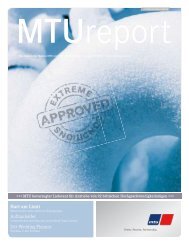English - MTU Onsite Energy
English - MTU Onsite Energy
English - MTU Onsite Energy
You also want an ePaper? Increase the reach of your titles
YUMPU automatically turns print PDFs into web optimized ePapers that Google loves.
<strong>MTU</strong> Brown <strong>MTU</strong> Brown<br />
0-17-28-62 80% der Farbe 60%<br />
CMYK CMYK CMYK<br />
<strong>MTU</strong> Blue <strong>MTU</strong> Blue<br />
60%<br />
50-25-0-10 80% der Farbe<br />
CMYK<br />
CMYK CMYK<br />
40%<br />
CMYK<br />
40%<br />
CMYK<br />
20%<br />
CMYK<br />
20%<br />
CMYK<br />
Research vessels guard the U.S. Great Lakes<br />
Invades from<br />
the deepth<br />
Canada<br />
MAP<br />
Great Lakes<br />
USA<br />
Ann Arbor<br />
Cuba<br />
Atlantic<br />
Ocean<br />
The R/V Kaho is one of two new <strong>MTU</strong> powered high-speed research vessels purchased by the USGS.<br />
The Great Lakes that border the United<br />
States’ northeast corner and Canada are the<br />
largest collection of freshwater lakes on<br />
Earth and hold 21% of the world’s surface<br />
fresh water. Protecting the delicate ecological<br />
balance in Lakes Superior, Ontario, Michigan,<br />
Huron and Erie is the job of the United States<br />
Department of the Interior’s US Geological<br />
Survey Center (USGS) and its Great Lakes Science<br />
Center. The USGS chose <strong>MTU</strong> diesel engines<br />
to power its two newest scientific<br />
research vessels, the Kaho and the Muskie.<br />
They are fifty-pound aquatic aliens, labeled<br />
the “locusts of the river,” and can terrorize any<br />
ecosystem they invade. They have been called<br />
“living missiles” because of their habit of launching<br />
themselves out of the water when startled,<br />
often right into the path of unwary boaters,<br />
32 I <strong>MTU</strong> Report 01/12


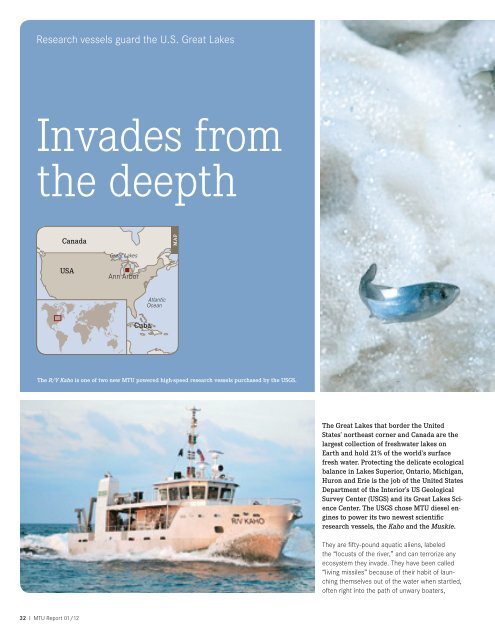



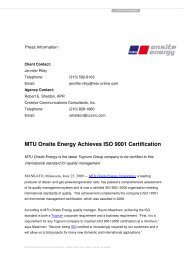

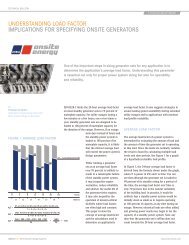


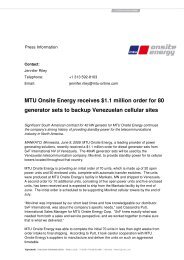
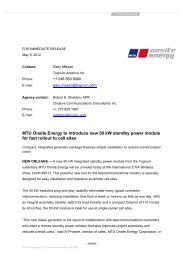


![Full power range of diesel generator sets [PDF] - MTU Onsite Energy](https://img.yumpu.com/28297693/1/190x253/full-power-range-of-diesel-generator-sets-pdf-mtu-onsite-energy.jpg?quality=85)
